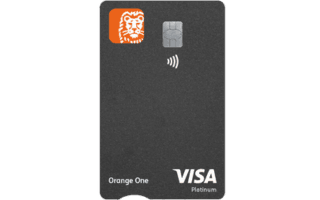How to Invest in Gold and Precious Metals

Understanding Precious Metals Investment
Gold and precious metals have historically been considered reliable investment options, especially for those residing in Australia. These assets are particularly appealing not only due to their intrinsic value but also because they often serve as a reliable hedge against inflation and economic instability. During periods of market uncertainty or geopolitical tensions, investors frequently turn to these commodities for stability and security. This long-standing investment strategy underscores the importance of a thorough understanding of the asset class.
The Types of Precious Metals
The primary precious metals available for investment include gold, silver, platinum, and palladium. Each of these metals has unique characteristics and market dynamics:
- Gold: Renowned for its durability and rarity, gold is often viewed as a safe haven. Its price tends to rise during economic downturns, making it a popular choice for investors seeking to preserve wealth.
- Silver: While also valued in jewelry and industry, silver typically has a lower price point than gold, making it accessible to a broader range of investors. Its applications in technology and renewable energy also contribute to its market value.
- Platinum: Known for its rarity, platinum is often used in industrial applications and luxury goods. Its value can be influenced by automotive industries, especially in the production of catalytic converters.
- Palladium: As another key player in the automotive sector, palladium has seen immense price fluctuations, particularly as demand shifts towards cleaner technologies and electric vehicles.
Forms of Investment
Investors in Australia can explore several methods to invest in precious metals:
- Physical Bullion: This includes investing in bars or coins, which can be bought from various dealers. However, it requires considerations regarding storage and insurance.
- Coins: Collectible coins (such as the Australian Kangaroo or Koala) can be a dual investment, serving both as currency and collectibles. Their value can depend on numismatic aspects.
- Exchange-Traded Funds (ETFs): These funds allow investors to gain exposure to precious metals without the need for physical ownership. They are traded like stocks and can be a convenient option.
- Mining Stocks: Investing in companies that mine precious metals can potentially offer higher returns, though they also come with greater risks associated with operational and market challenges.
The Risks Involved
While investing in precious metals can be beneficial, it is vital to recognize the risks involved:
- Market Volatility: Precious metals can be subject to significant price fluctuations influenced by factors such as global demand, currency strength, and geopolitical events.
- Storage Costs: Acquiring physical assets comes with the obligation to store them securely, which can incur costs such as safe deposit box fees or home security measures.
- Global Economic Factors: Changes in interest rates, currency values, and economic indicators can greatly affect the valuation of precious metals.
Australia has a robust market for precious metals, characterized by a wealth of dealers, brokers, and knowledgeable professionals. By analyzing current market conditions and reviewing historical performance, investors can make informed decisions consistent with their financial goals. Understanding personal risk tolerance and investment objectives will guide how to effectively incorporate these valuable assets into a diversified portfolio.
Ultimately, prudent research and planning are integral to successfully navigating the precious metals market. For investors looking to secure their financial future, these assets can offer both a hedge against economic uncertainties and a potential avenue for wealth accumulation.
CHECK OUT: Click here to explore more
Choosing the Right Investment Strategy
When it comes to investing in gold and precious metals, selecting the appropriate strategy is crucial for achieving long-term financial goals. Each investment method presents unique advantages and drawbacks, making it essential for investors to evaluate their personal circumstances, risk tolerance, and market conditions before committing funds. The following considerations can help investors navigate their choices effectively.
Determining Your Investment Objective
The first step in formulating a precious metals investment strategy is to clarify your investment objectives. Are you looking to diversify your portfolio, hedge against inflation, or pursue long-term capital appreciation? Identifying these goals will influence the choice of investment methods.
- Wealth Preservation: If the primary aim is to protect your wealth during economic downturns, investing in physical bullion or coins may be the most suitable approach. The tangible nature of these assets can provide a sense of security and peace of mind during turbulent times.
- Active Trading: For those with greater market knowledge and experience, trading precious metal ETFs or mining stocks may offer opportunities for more significant returns. This strategy requires consistent monitoring of market movements and the ability to react quickly to price fluctuations.
- Collectibles Investing: If you possess an interest in numismatic items, investing in collectible coins can provide both an investment and a hobby. However, this path requires expertise in evaluating the condition and rarity of these coins.
Understanding Market Timing
Another vital aspect to consider when investing in precious metals is market timing. While predicting short-term price movements can be challenging, staying informed about global economic trends, currency fluctuations, and geopolitical events can provide insights into potential opportunities.
Gold and silver often exhibit seasonal patterns influenced by factors such as demand during the festive season, industrial consumption, and investment trends. Being aware of these cycles can enhance investment timing, allowing for better pricing and entry points. It is also essential to remain vigilant of market sentiment, as investor behavior can have significant effects on metal prices.
Researching Credible Dealers and Resources
Choosing the right dealers or platforms to purchase precious metals can significantly affect the overall investment experience. Researching reputable dealers who have a history of providing transparent pricing and customer service is paramount. The Australian market offers numerous options, with both online platforms and physical stores available for investors. Always check for certifications and reviews before engaging with a dealer.
Furthermore, it is advisable to utilize credible market analysis resources and reports to remain updated on pricing trends, forecasts, and economic indicators that can affect precious metals. Engaging with knowledgeable professionals or financial advisors specializing in commodities can also enhance your understanding and approach to investing in this asset class.
In summary, investing in gold and precious metals requires careful consideration of your investment objectives, market timing, and selecting credible resources. By establishing a clear strategy, investors can position themselves to effectively navigate the complexities of this asset class and optimize the potential for financial growth.
CHECK OUT: Click here to explore more
Diversifying Within the Precious Metals Sector
Once an investor has established their investment objectives and chosen a method for acquiring precious metals, the next step involves diversification within this asset class. Diversifying across different precious metals and related investments can mitigate risks and enhance the potential for returns.
Exploring Various Precious Metals
While gold is often viewed as the primary precious metal investment, other metals such as silver, platinum, and palladium may offer unique opportunities and benefits.
- Gold: Globally recognized as a safe haven asset, gold tends to appreciate during times of economic uncertainty. It has a long history of maintaining value and is widely traded.
- Silver: Often more volatile than gold, silver has industrial applications, particularly in technology and renewable energy sectors. This added demand can drive its price, making it an attractive option for investors.
- Platinum: Although typically more rare than gold and silver, platinum is heavily utilized in catalytic converters and jewelry. Its price movements can be influenced by automotive demand.
- Palladium: Similar to platinum, palladium also finds significant use in the automotive industry, with supply concerns contributing to its valuation. Given its unique supply-demand dynamics, palladium can be a valuable part of a diverse metals portfolio.
Investing across multiple metals allows an investor to capitalize on varying market conditions and industrial demands, thus enhancing their overall risk management strategy.
Incorporating Mining Stocks and ETFs
In addition to investing in physical metals, the inclusion of mining stocks and exchange-traded funds (ETFs) offers a different avenue for exposure to precious metals. Mining companies can benefit from rising metal prices, thereby providing a leveraged return compared to physical holdings.
- Mining Stocks: Shares in companies that extract precious metals offer potential for capital growth and dividends. However, it’s important to evaluate a mining company’s operational efficiency, geopolitical risks, and management professionalism.
- ETFs: These funds are designed to track the price of a specific metal or a collection of precious metals. They offer liquidity and ease of trading, making them an attractive option for those who prefer not to handle physical assets. However, investors should carefully assess management fees and fund methodologies.
By combining physical assets with mining investments and ETFs, an investor can build a well-rounded portfolio that exploits various market dynamics and minimizes risks associated with holding single assets.
Storing and Insuring Your Investment
Another critical consideration in precious metals investing is storage and insurance. Decisions regarding where and how to store physical metals can impact their value and ease of access.
- Personal Storage: Some investors opt to keep their precious metals in home safes. While this provides direct access, it also raises the risk of theft and potential insurance issues.
- Bank Safe Deposit Boxes: Storing metals in bank vaults offers a higher level of security but may incur added costs and limited access hours.
- Third-party Custodians: Engaging a reputable third-party storage service can offer a balanced solution, with professional security and insurance coverage, ensuring the investment remains safeguarded.
It’s also prudent to acquire insurance for valuable physical assets to protect against theft or damage. Knowing that your investment is protected can provide peace of mind, allowing you to focus on your strategic objectives without undue worry.
CHECK OUT: Click here to explore more
Conclusion
Investing in gold and precious metals can provide a solid foundation for building wealth and securing financial stability, particularly in volatile economic climates. As outlined, it is essential for investors to set clear investment objectives before embarking on their journey into this asset class. By understanding the nuances of each precious metal, such as gold, silver, platinum, and palladium, and exploring various investment vehicles including mining stocks and ETFs, investors can effectively capitalize on the unique characteristics and market trends associated with these assets.
Moreover, diversification within the precious metals sector can significantly enhance an investor’s risk management strategy. By spreading investments across different metals and related securities, one can mitigate potential losses while positioning themselves to seize opportunities as they arise. It is equally important to consider practical aspects such as storage and insurance. Ensuring the secure storage of physical assets and acquiring adequate insurance coverage not only protects investments but also boosts confidence in pursuing long-term strategies.
In summary, investing in precious metals can be a rewarding endeavor when approached with diligence and informed decision-making. As always, keeping abreast of market trends and conducting thorough research is crucial. By integrating a well-rounded strategy that includes a balanced portfolio, understanding market dynamics, and safeguarding investments, individuals can navigate the complexities of precious metals investing and potentially enhance their financial future.

Linda Carter is a writer and expert in finance and investments. With extensive experience helping individuals achieve financial stability and make informed decisions, Linda shares her knowledge on the Innovbs platform. Her goal is to provide readers with practical advice and effective strategies to manage their finances and make smart investment choices.






